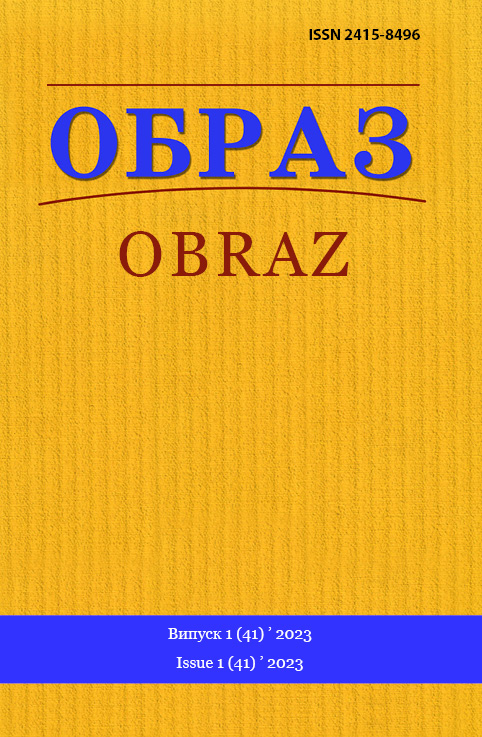Abstract
Introduction. The relevance of the research is aimed at revising traditional technologies and transitioning to the creation of highly effective management systems for the entire complex of information resources.The aim of the study. The purpose of the article is to determine the main regularities of the formation of information and communication activities, in particular content and audience characteristics. The object of research is the information and communication activity of social communications. The subject of scientific research is the content and audience characteristics of the basic concept of the functioning of information culture.
Methods. The basis of scientific research is the analysis of theoretical studies. Processing of the source base was based on the application of analytical-synthetic, logical methods, principles of selection, analysis and generalization of research material. The methodology of typological and species segregation was used as a method of determining the specificity of the segmentation of certain realities, content and audience characteristics were formulated. The analytical method was used to reveal the typological factors of information and communication activities. The inductive method made it possible to carry out a general analysis of existing points of view on the investigated problem.
Results and conclusions. The means of mass communication are a reflection of the consciousness of both an individual and society in general. All attempts to highlight the socio-cultural features of modern mass communication media, which do not take into account the mass communication media themselves as a phenomenon of combining content and constructive-visual forms of information presentation, go beyond the journalistic characteristics of these media. It is correct to interpret any events not in the traditional typological context of the documentary form of mass communication means, but in the technological context, which involves the use of flexible approaches to mass communication means.
References
1. Bulbeniuk, S. (2013), Sociopsychological Nature of Political Power, KNEU, Kyiv, 215 p.
2. Vovkanych, S. (1999), Information, Intelligence, Nation, European world, Lviv, 416 p.
3. Zolyak, V.V. (2007), «Convergence as a universal detection of coincidence of common features», Zbirnyk prats Naukovo-doslidnoho tsentru periodyky / Lviv. nauk. b-ka im. V. Stefanyka, Nauk.- dosl. tsentr periodyky [Collection of Works of the Scientific Research Center of Periodicals / Lviv. of science b-ka named after V. Stefanyka, Research Assistant periodical center], vol. 15, pp. 139–145.
4. Ilganaeva, V.O. (2009), «Theoretical and methodological synthesis of social and communication knowledge», Filosofiya spilkuvannya: filosofiya, psykholohiya, sotsialna komunikatsiya [Philosophy of communication: philosophy, psychology, social communication], no. 2, pp. 96–101.
5. Mitchuk, O.A, Haydur, N.M. (2021), «Peculiarities of interaction of factors of socio-communication activity», Obraz [Image], Issue 3 (37), pp. 17–26.
6. Mitchuk, O.A. (2021), «Specialized fields of journalism in the context of political and philosophical concepts», Obraz [Image], Issue 1 (35), pp. 50–59.
7. Panko, T.I., Kochan, M.I., Matsyuk, G.P. (1994), Ukrainian Terminology: Textbook for students. humanitarian special higher education closing, Svit, Lviv, 215 p.
8. Porfimovich, O.L. (2007), Image and Power, KNU named after T. Shevchenko, Kyiv, 80 p.
9. Rizun, V.V. (2003), Masy: lecture texts, KNU named after T. Shevchenko, Kyiv, 116 p.
10. Rizun, V.V. (2001), «The nature and structure of the communicative process», Naukovi zapysky Instytutu zhurnalistyky [Scientific notes of the Institute of Journalism], vol. 2, pp. 17–37.
11. Mitchuk, O., Penchuk, I., Podluzhna, N., Shirobokova, O., Tregub, A. (2021), Changes in social communication as a tool of social work under the influence of digitalization, Estudios de Economia Aplicada, vol. 39(3).
12. Ross W. Ashby, (1999), An Introduction to Cybernetics, Chapman & Hall, London, аvailable at: http://pcp.vub.ac.be/books/IntroCyb.pdf (accessed: 18 January 2023).
13. Tsymbalenko, Y., Oltarzhevskyi, D., Horodenko, L. & Oltarzhevska, O. (2020), The role of company’s top officials in corporate communications, Problems and Perspectives in Management, vol. 18(3), pp. 255–267.

This work is licensed under a Creative Commons Attribution 4.0 International License.

